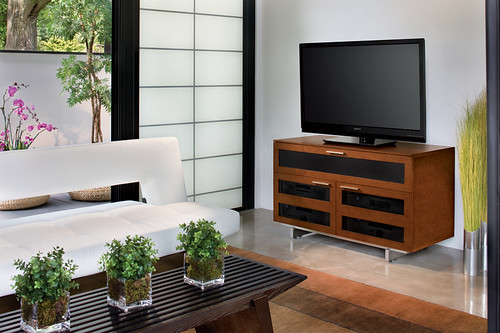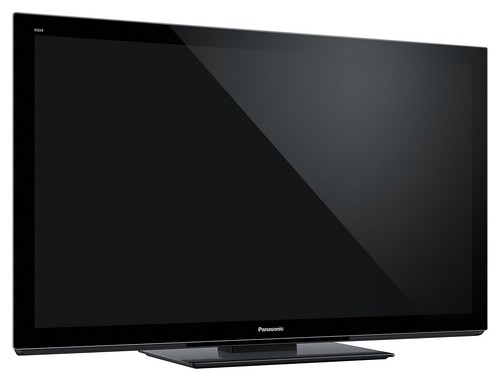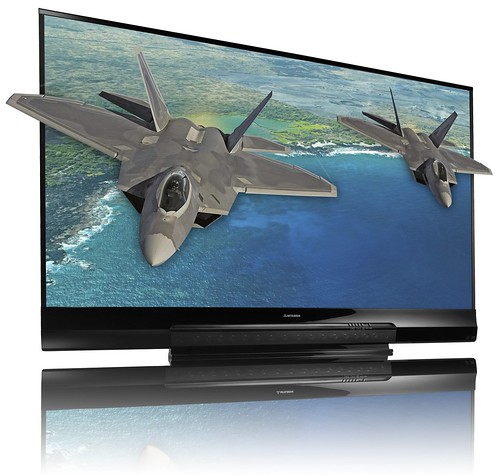Shopping for the perfect TV can easily become a frustrating experience. In the old days (well, not that old) we had one choice: CRT. Now TVs come in a variety of technologies, and even within each technology there are some slight, but important, variations. Well guide you through the basics to help make the decision process easier, then you can use that knowledge to pick the best TV for your home.
LCD
 When Sharp first popularized the flat panel LCD TV, models were small, expensive and didnt look that great compared to other popular display technologies. A lot has changed in that time. Todays LCD TVs come in any home theater size, and feature the best performance characteristics to meet a videophiles standards.
When Sharp first popularized the flat panel LCD TV, models were small, expensive and didnt look that great compared to other popular display technologies. A lot has changed in that time. Todays LCD TVs come in any home theater size, and feature the best performance characteristics to meet a videophiles standards.
LCDs, which work by allowing light to pass through a liquid crystal encased in a cell, require a light source. Traditionally this was done with a type of fluorescent light called a CCFL. CCFL TVs had the disadvantage of allowing a lot of light to leak around the cells, producing a duller image with poor contrast. Many newer TVs now use light emitting diodes or LEDs to produce the light. LED-based LCD TVs use a lot less energy than CCFL TVs, they can be brighter, show more accurate colors and, when combined with a local dimming technology, can have better contrast. LED-based models can also be extremely thin, sometimes less than an inch thick.
To make matters more complicated, LED LCD TVs come in two varieties: full back lit and edge lit. Edge-lit TVs have the LEDs mounted around the edge of the panel and employ channels to get the light to the screen. Edge-lit TVs can be very thin and are usually a little less expensive than full back-lit models. Back-lit TVs usually are a little thicker, but can be designed with hundreds of LED clusters that will shut off for dark scenes on screen (called local dimming) resulting in a much better picture.
LCD TVs sometimes have trouble with fast action, so manufactures have come up with systems to double, triple or quadruple the standard refresh rate of the screen. TVs that feature 120 Hz or higher processing can make action look smoother. However, sometimes that same processing makes film-bases movies look like sitcom videos. Its a good idea to experiment to see what looks good to you.
LCD TVs are usually the brightest of the TV technologies, which makes them good for rooms with lots of light or windows.
Plasma
 The first popular flat-panel TVs were plasma TVs, and many videophiles still consider them the best. Plasmas work similarly to the old-fashioned CRT TVs in that they have a screen coated with phosphors. The difference is that each phosphor is encased in a cell with plasma gas. When the gas is triggered electronically, it causes the phosphors to emit light. Thus, in a plasma TV, the light essentially comes from the surface of the screen rather than from a light source behind it.
The first popular flat-panel TVs were plasma TVs, and many videophiles still consider them the best. Plasmas work similarly to the old-fashioned CRT TVs in that they have a screen coated with phosphors. The difference is that each phosphor is encased in a cell with plasma gas. When the gas is triggered electronically, it causes the phosphors to emit light. Thus, in a plasma TV, the light essentially comes from the surface of the screen rather than from a light source behind it.
Because there is no light source behind the screen, theres no light leakage. That benefit allows plasmas to have very good contrast and black level, which helps to create the rich picture home theater fans want. Plasmas are usually not as bright as LCD TVs, and they can be more reflective. They also tend to be thicker (about three inches thick), though a few companies have shown ultra-thin models.
In the past, plasma TVs had a reputation for burn-in or image retention. That happened when a static image remained on the screen for extended periods. This was a problem for channels that posted a network logo or video games that kept the score in the same place for long periods of time. TV makers have mostly resolved this problem, so you really have to work hard to burn in an image. Temporary image sticking can happen, which appears as a slight ghost image, but that always goes away in a moment or two.
Plasma TVs are usually less expensive than equivalently-featured LCD models.
Rear Projection
 Rear projection TVs are not as common as they used to be, but Mitsubishi specializes DLP models. DLP TVs use micromirror chips from Texas Instruments. On the DLP chip are thousands of tiny mirrors that reflect light onto the screen. The mirrors flip on and off much faster than a human can detect, so the type of processing that LCD TVs need isnt necessary.
Rear projection TVs are not as common as they used to be, but Mitsubishi specializes DLP models. DLP TVs use micromirror chips from Texas Instruments. On the DLP chip are thousands of tiny mirrors that reflect light onto the screen. The mirrors flip on and off much faster than a human can detect, so the type of processing that LCD TVs need isnt necessary.
Most DLP TVs today use lamps which need to be replaced every few thousand hours. Replacement lamps can cost several hundred dollars, but DLP TVs are often much cheaper than flat panel TVs (especially at large sizes), so you need to consider the tradeoff. A few models use LEDs light which never need to be replaced. Mitsubishi makes DLP TVs that use a laser light source that also never needs to be replaced and has the ability to create extremely accurate and bright colors.
If wall-mounting isnt an issue, a DLP TV may be a good choice.
All three TV technologies are available in 3D TV models.
Source: HD Living

